

|


|
 |
 |
 |
 |
 |
 |
 |
 |



|
Micronesia
Water Temp All of the islands experience warm water temperatures throughout the year. Expect temps in the 80 F to 82 F range. Visibility Palau - Visibility averages 100' or better most of the year, but during the rainy season clarity can be affected somewhat. Truk - Also averages 100', but can be more affected by summer rains and at times may drop to 50'. Yap - Inside reefs average up to 100' while the outer reefs and walls can see 150' or better. Diving Guam - Grand Central for the south pacific and Micronesia, Guam may be your destination or your transfer point to the out islands. Guam is complete with large resorts, fine restaurants, beaches, water sports and great diving. There are many dives inside the harbor including excellent reefs and large wrecks, such as the the Tokai Maru, a 465' WWII Japanese cargo vessel torpedoed inside the harbor. Outside the harbor are excellent walls with visibility averaging 100'. But the most famous dive of Guam is the Blue Hole. The Blue Hole drops from the ocean bottom at 60' to about 300', but at 130' there is a "window" which opens to the sea. Here you can exit onto the face of the wall and ascend. It's breathtaking. Kosrae - If you are looking for the truely quiet "get away from it all" tropical vacation, look closely at Kosrae. Not found by commercial tourism yet, this is your opportunity to explore vigin divesites. Like Pohnpei, the reef completely encircles the island and shallow reef dives will entertain the photographer with an astounding variety of tropical marine life. Outside the barrier reef, pelagics are frequently seen, and a resident school of about 150 dolphins play and frolic in the crystal clear sea. Palau - While Palau has diving to suit every taste, most divers come for the walls located just beyond the 125 mile long barrier reef. In some areas the wall actually begins in just 6' - 20' of water and drops vertically to 1000'. Drift diving is the norm in Palau as the currents can be swift through the channels and along the walls. Due to these currents, marine life can be profuse and pelagics are often sighted riding these currents as well. You will have a great opportunity to dive with gray reef sharks, mantas and occasionally, whale sharks. In addition to the natural wonders of Palau, there are also a number of WWII Japanese ships to be explored in the island's lagoon. Pohnpei - The high mountain peaks and tropical beauty of Pohnpei give way to some of the most fun and exciting dives in Micronesia. Enclosed inside a barrier reef, the divesites are colorful, clear and profuse with tropical marine life. For those with a penchant for adventure, outside the reefs are vertical walls giving way to the ocean floor 6000' below. The edge of the wall is also a favorite cruising route of pelagics, including white tip reef sharks. Rota - The tip of a 36,000 ft. mountain rising from the depths of the Marianas Trench. Visibility is argued to be the best in Micronesia averaging 200'. Among the popular divesites here are the 393' Japanese freighter, Shoun Maru resting at 110' in the sand, and Senhamon Cave, an underwater grotto with archways and swimthroughs that will impress any diver. Tinian - The waters surrounding this tiny island provide divers with crystal clarity and many unexplored divesites. A very unique quality here is that most sites begin less than 50 yards from the shoreline as the bottom slopes away very quickly. Truk - Yes there are beautiful reefs that fringe Truk Lagoon. But the lure here is wreck diving. Truk Lagoon was to the Japanese Navy what Pearl Harbor was to the U.S. Fleet. Ships and planes numbering around 60 lie on the bottom and 20 of these are dived on a regular basis. The diveable ships begin in as shallow as 40' to 60' depths. The ships are encrusted with soft corals and sponges and remain almost completely intact just as they were when they went down. Look but do not touch. Truk Lagoon is a state monument and the government as well as your diveguides are very protective. Diving and exploring these wrecks is easy and comfortable as currents are almost non-existent. Yap - Diving here as at other Micronesian locations has a very diverse marine environment suitable for all divers. The variety of critters is remarkable, but most divers come here for the manta rays. Several channels seem to draw mantas like a magnet. These gentle giants have wingspans of up to 15 feet. The mantas come and go depending on the tides within the channels so dive times can change daily. The numbers of rays seen on any particular dive can range from a few to 50. Other diving around Yap includes shallow reefs, thick with soft corals and sponges, and walls beyond the outer reef where visibility averages up to 150' and schooling pelagics are regularly encountered. |
| DiveGuide.com Scuba Diving Vacations & Dive Holidays - Book direct dive travel with scuba diving operators, resorts, dive liveaboard yachts and dive travel representatives worldwide. We provide free scuba diving information for the traveling diver on vacation and holiday in and to scuba diver destinations around the world. |
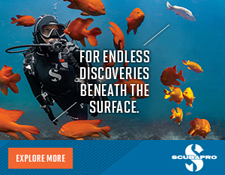
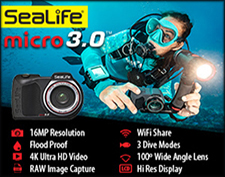
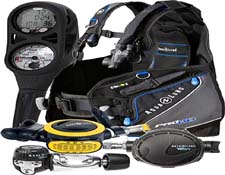


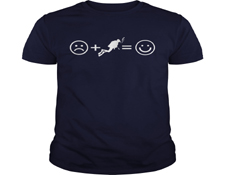
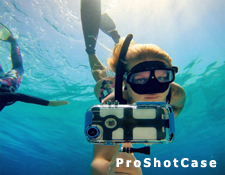
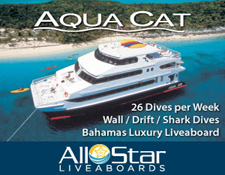
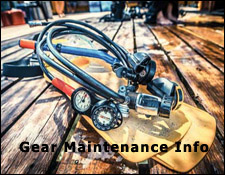



|